Pomegranate Molasses is one of those ingredients that can quite literally transform your cooking in the best possible way. Because it's become increasingly popular over the past few years, you can sometimes find bottles of Pomegranate Molasses in supermarkets.
And, of course, like everything else in the world, you can order it on Amazon. But, here's the thing...
A bottle of Pomegranate Molasses will run you around $15. Making it yourself will cost you about ⅓ of that and is as simple as pouring some pomegranate juice into a pan and letting it reduce down into a thick, intensely flavored syrup.
Prep time? About 1 minute.
Deliciousness factor? Off the scale.
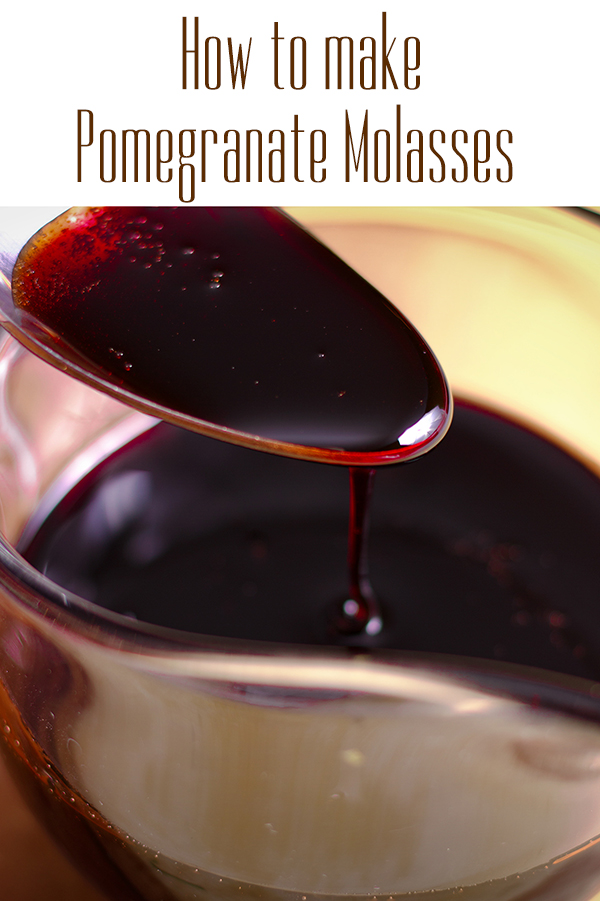
Is Pomegranate Molasses the Same Thing as Molasses?
The short answer to that question is no. Pomegranate molasses has a similar color and consistency to regular molasses, but the ingredients are completely different things.
Molasses is a thick, dark colored syrup that's created during the process of making sugar. After sugar cane or sugar beets are crushed, the juice is extracted and then boiled down to form sugar crystals. Molasses is the thick, brown syrup that remains after the sugar crystals are removed.
Pomegranate Molasses is simply pomegranate juice that's been boiled with a bit of sugar and lemon juice until it transforms into a thick, very dark red syrup.
What makes pomegranate molasses a secret weapon in the kitchen is its ability to quickly add the kind of depth and complexity to a dish that usually comes only from browning and slowly cooking food. One of the best things about it is that, even with some added sugar, its primary characteristic is not sweet. It's sour, tangy, acidic, and even a bit smoky.
This makes it one of the most versatile pantry staples in the world because you can add it to sweet AND savory dishes, and everything in between.
My favorite ways to use Pomegranate Molasses:
- Add it to your favorite vinagrette. This is one of my favorite ways to use Pomegranate Molasses. Simply add a tablespoon or two (or more!) to classic vinaigrette, reducing the amount of vinegar slightly to accommodate for the extra acidity.
- Add it to cocktails! Even though the recipe doesn't call for it, I love adding a bit of Pomegranate Molasses to this Pomegranate Ginger Spritzer. Try adding a couple teaspoons to a classic Margarita, Gimlet, or French Pear Martini.
- Add it to all kinds of beverages. Iced tea, sparkling water, lemonade... a bit of pomegranate molasses adds a deliciously refreshing tang to everything it touches.
- Brush it on beef, pork, or chicken, or use it in marinades. Pomegranate molasses is delicious added to marinades or brushed over meat or poultry as a glaze because it adds the kind of bright acidity and flavor that you get from fruit without adding hardly any sweetness.
- Brush it over roasted vegetables. I make big trays of roasted vegetables all the time, using them throughout the week in soups, salads, pasta, and alongside meaty dishes. This method for roasting vegetables is super easy and can be used to roast pretty much any kind you like. Right after roasting, brushing the veggies with a bit (you don't need very much!) of pomegranate molasses to add a meaty richness, without using any actual meat.
- Add it to the base of soups, stews, curries, and stir-fries. The very best soups, stew, and curries layer flavors throughout the cooking process, using every single step as a way of bringing a new flavor-packed element to the dish. A few dashes of pomegranate molasses stirred in along with whatever other liquid is being used in the dish will instantly add depth and richness to nearly any kind recipe, like this Asian Short Rib Fried Rice or Sesame Chicken with Pomegranate Raspberry Sauce.
- Use it to add depth to sauce and gravy. Just as adding pomegranate molasses to soups, stews, and curries enriches their flavor, adding a tablespoon or two to sauces and gravy can improve the flavor to a surprising degree.
How to Make Pomegranate Molasses:
Making Pomegranate Molasses is a 2-step process requiring only 3 ingredients:
- Pomegranate Juice
- Sugar
- Lemon juice
That's all you need to make a batch of Pomegranate Molasses.
The process is super simple:
- Dump all three ingredients into a saucepan and bring it to a boil
- Let the mixture simmer until it's reduced to about 1 cup.
That's it. When reduced, it will be thick enough to coat the back of a spoon.
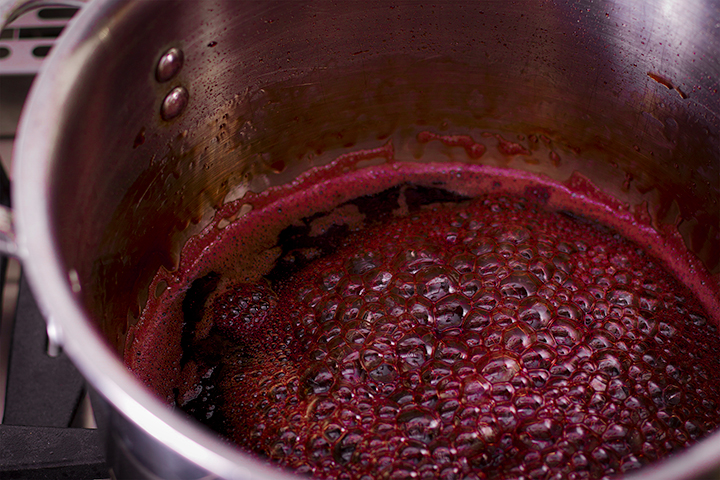
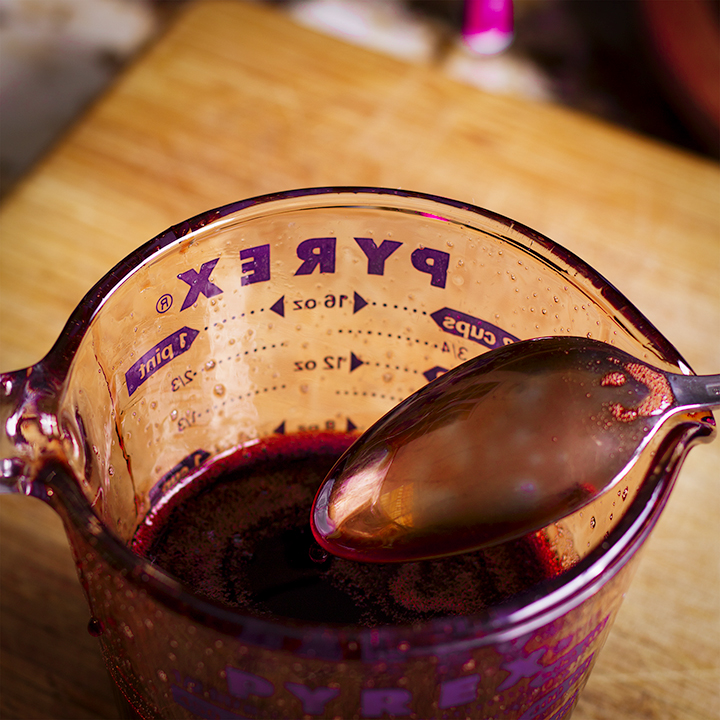
Can you overcook pomegranate molasses?
Yes, you CAN overcook pomegranate molasses.
If you're tempted to reduce your pomegranate molasses even more, in an effort to further concentrate the flavor, don't. Reducing 4 cups of pomegranate juice to 1 cup is as far as you want to go.
Reduce it much further and it will turn from a lovely magenta color to brown. Once cool, it will solidify into an extremely thick and vicious stuff that's difficult to remove from the jar. Also, it will probably taste slightly burned.
Just let it boil until it has reduced to 1 cup and you're golden.
How to Store Pomegranate Molasses:
Store pomegranate molasses in a covered, air tight container in the refrigerator. I usually use a mason jar with a lid. Or, sometimes I use a glass container with a snap on lid.
If stored in the refrigerator, pomegranate molasses will keep for up to 6 months.
Some people claim the the acidity of pomegranate molasses is high enough to store it in the pantry. Call me a nervous Nelly, but I can't bring myself to test this out. The acidity might be high, but it is fruit juice based after all and no matter how crowded my refrigerator, it's not that hard to find a place for an 8-ounce jar.
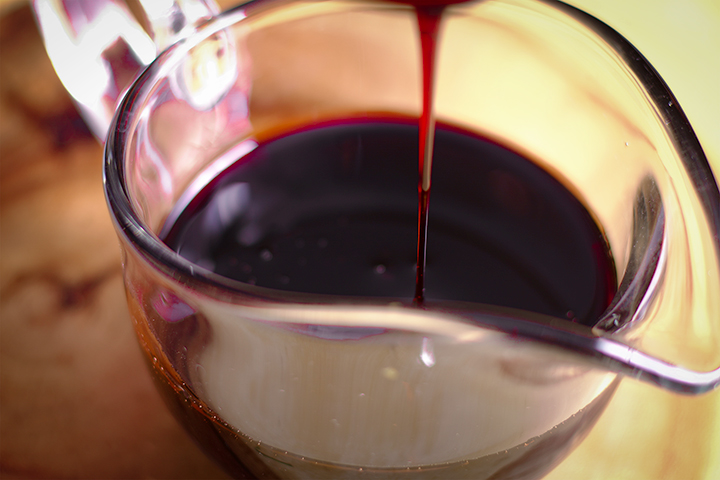
Pomegranate Molasses FAQs:
A: Nothing. Pomegranate molasses and pomegranate syrup are two different names for the exact same thing.
A: Yes! I usually prefer to make pomegranate molasses that's on the tart side because I feel that it's more versatile for adding it to sweet AND savory recipes. But, it's easy to make pomegranate molasses that's sweeter. Simply add 2-3 tablespoons more sugar.
A: It's important to choose a bottle of pomegranate juice that is pure juice - no additives, other kinds of juice or sugar. The label on the bottle should read that it's made from 100% pure pomegranate juice with no added sugar.
Recipes that use Pomegranate Molasses:
Asian Beef Fried Rice {with Slow Cooked Short Ribs}
This beef fried rice recipe starts with one of my all-time favorite dishes - Asian Short Ribs. The meat is fall-off-the-bone tender and coated in a rich, flavorful sauce. Toss in some shallots, green beans and broccoli, and flavor everything with pomegranate molasses, and you have a deeply satisfying one-pot meal about an hour.
Pomegranate Raspberry Sesame Chicken {Or Pork!}
A deliciously unique take on sesame chicken: crispy fried pieces of chicken or pork coated in a sweet, tangy, nutty pomegranate raspberry sesame sauce.
Niçoise Salad with Bacon and Pomegranate Molasses Vinaigrette
This somewhat non-traditional take on the delicious Niçoise Salad includes buttery potatoes, marinated peppers, green beans, cherry tomatoes, bacon, and tangy Pomegranate Molasses Vinaigrette.
Pomegranate Vinaigrette
This simple pomegranate vinaigrette only takes a few minutes to prepare and adds a delicious slightly sweet and tangy zing to any kind of salad or vegetable.
Israeli Salad with Pomegranate Vinaigrette and Roasted Nuts
Israeli Salad is a delicious, fresh mix of vegetables and herbs chopped into very small pieces so that every bite contains a variety of flavors and textures. This version of the classic salad is dressed with Pomegranate Vinaigrette and a handful of crunchy Ja'ala (roasted spiced nut and seed mix).

+ Subscribe to my newsletter for new and exclusive recipes in your in-box every month! As a full time traveler, living, working, cooking, and baking from a 5th wheel RV, it's also where I share our experiences of life on the road.
If you give this recipe a try, let me know! Leave a comment, rate it, or take a picture and tag it #alittleandalot on Instagram.
Pomegranate Molasses Recipe
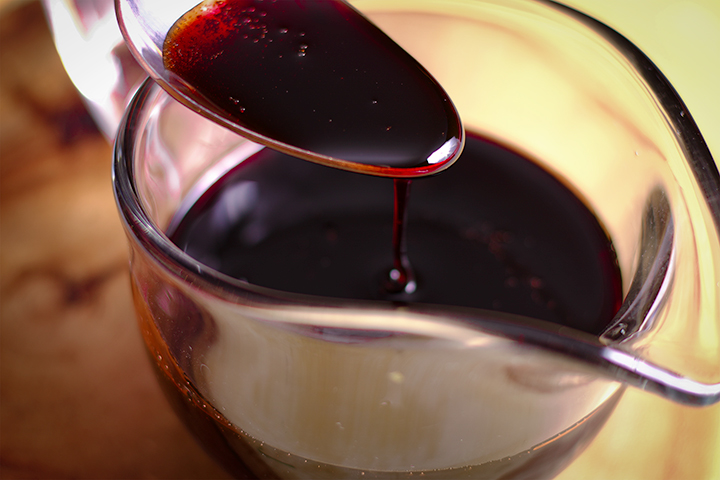
Homemade Pomegranate Molasses requires 3 ingredients, takes very little time to make, will keep for 6 months, and can be used in a wide variety of recipes.
Ingredients
- 4 cups ( 1 liter/ 33.8 ounces) pure, unsweetened pomegranate juice (*See note)
- ½ cup granulated sugar (*See note)
- ⅓ cup freshly squeezed lemon juice
Instructions
- Add the pomegranate juice, sugar, and lemon juice to a saucepan that's at least 3-quarts in capacity. The mixture will boil up at first, so it's important to use a saucepan large enough to contain it. Bring to a boil over medium-high heat.
- Continue to let the mixture simmer, stirring every once in a while, until it has reduced to 1-cup. At this point the pomegranate molasses will be thick enough to coat the back of a spoon.
- Pour the pomegranate molasses into a glass jar or measuring cup and let cool. Store in a covered container in the refrigerator for up to 6 months.
Notes
If you want your pomegranate molasses to be sweeter, add more sugar:
I prefer pomegranate molasses that's on the tart side because it makes it more versatile for adding it to sweet AND savory recipes. But, if you'd like yours to be sweeter, simply add a couple tablespoons more sugar.
What kind of pomegranate juice should you use?
It's important to choose a bottle of pomegranate juice that is pure juice - no additives, other kinds of juice or sugar. The label on the bottle should read that it's made from 100% pure pomegranate juice with no added sugar.
How to store pomegranate molasses:
Store pomegranate molasses in a covered, air tight container in the refrigerator. I usually use a mason jar with a lid. Or, sometimes I use a glass container with a snap on lid.
If stored in the refrigerator, pomegranate molasses will keep for up to 6 months.
Recommended Products
As an Amazon Associate and member of other affiliate programs, I earn from qualifying purchases.
Nutrition Information:
Yield:
16Serving Size:
1 tbspAmount Per Serving: Calories: 59Total Fat: 0gSaturated Fat: 0gTrans Fat: 0gUnsaturated Fat: 0gCholesterol: 0mgSodium: 7mgCarbohydrates: 15gFiber: 0gSugar: 14gProtein: 0g

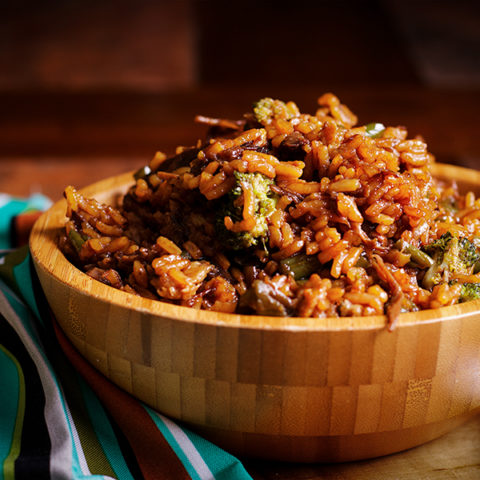
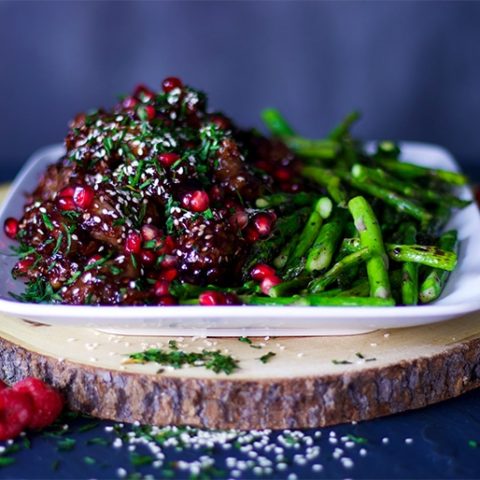
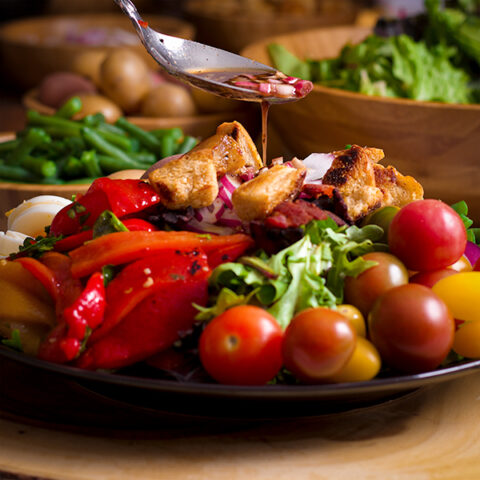
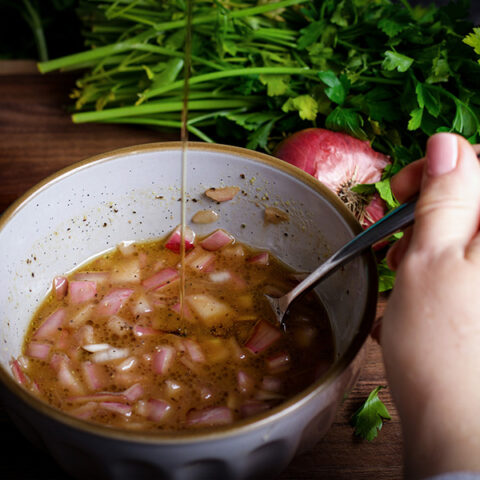
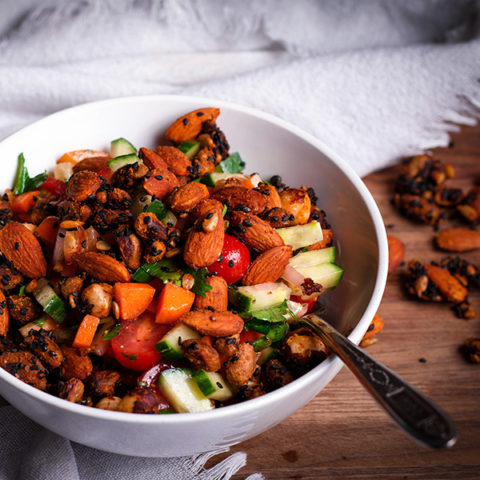







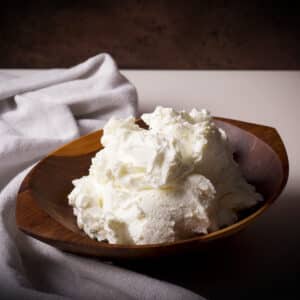
Comments
No Comments